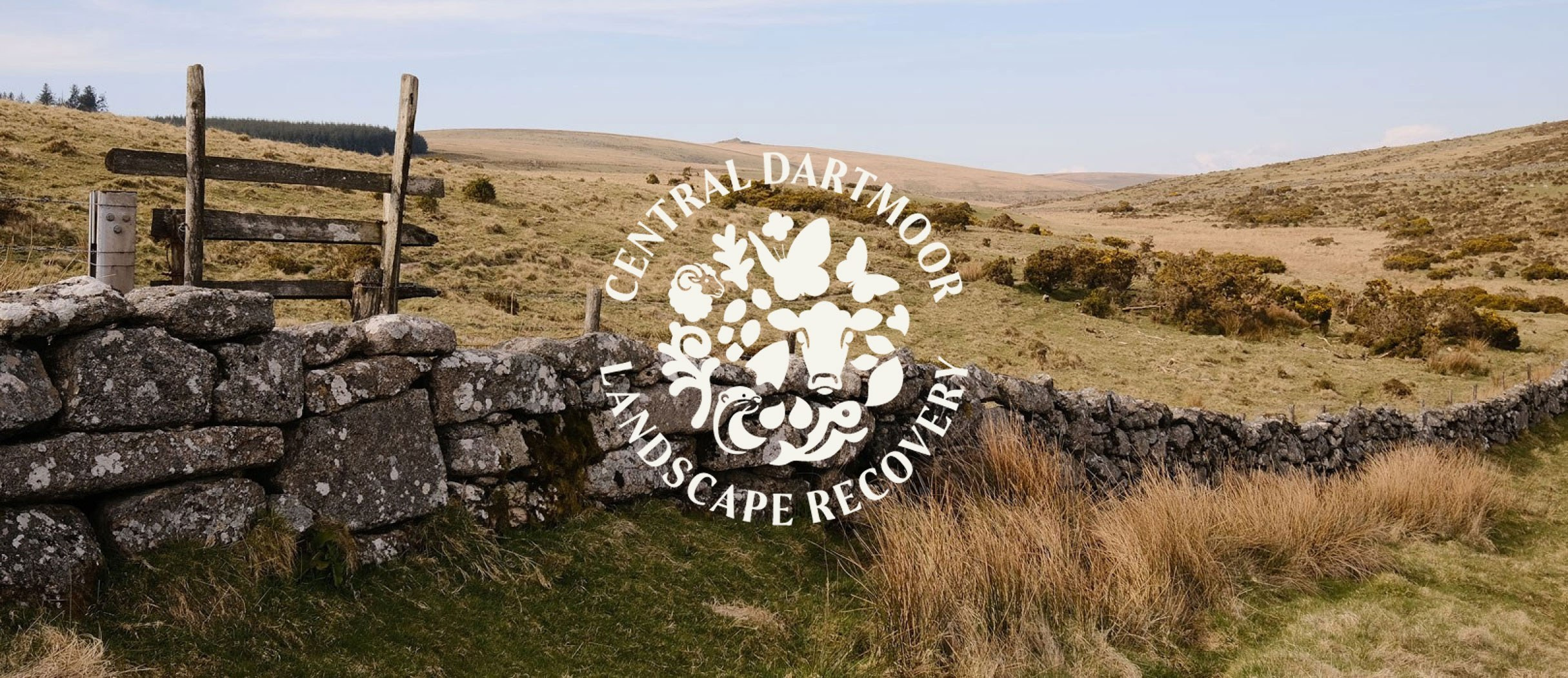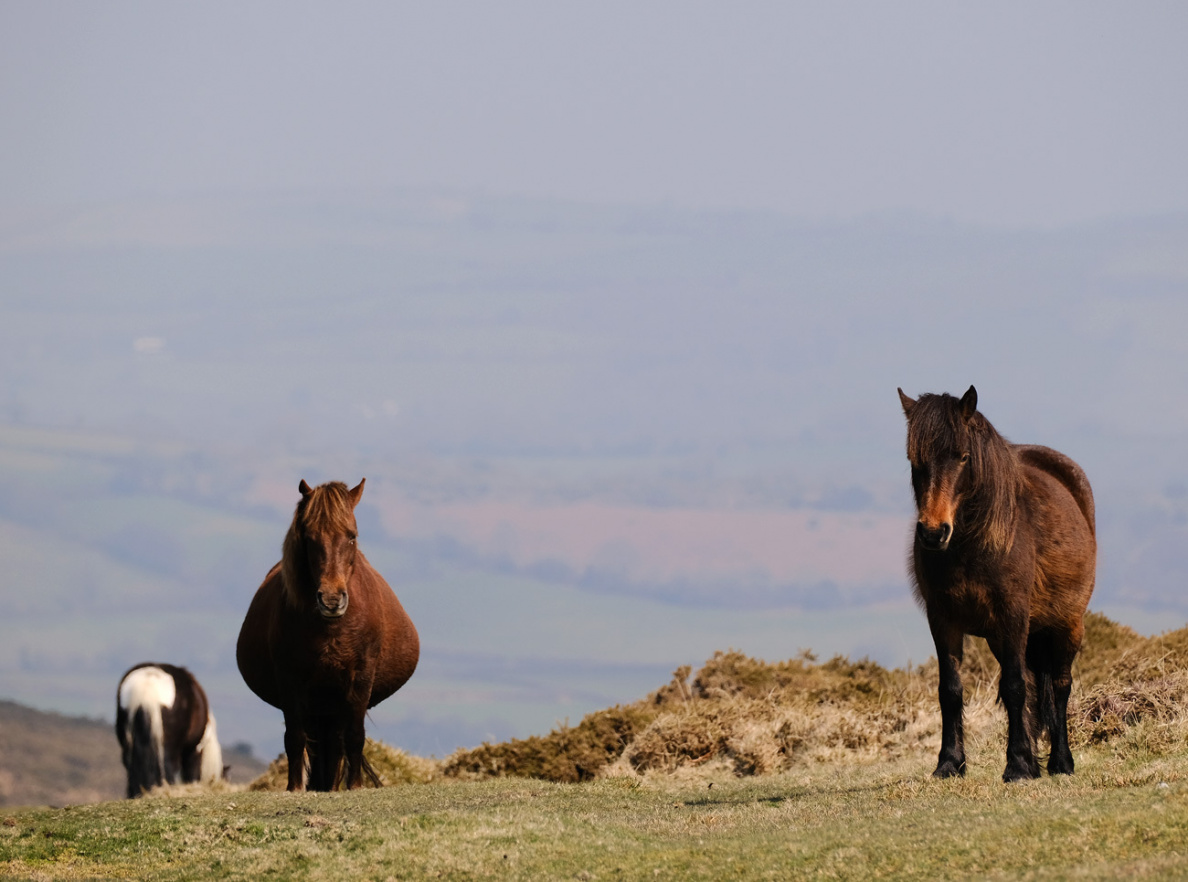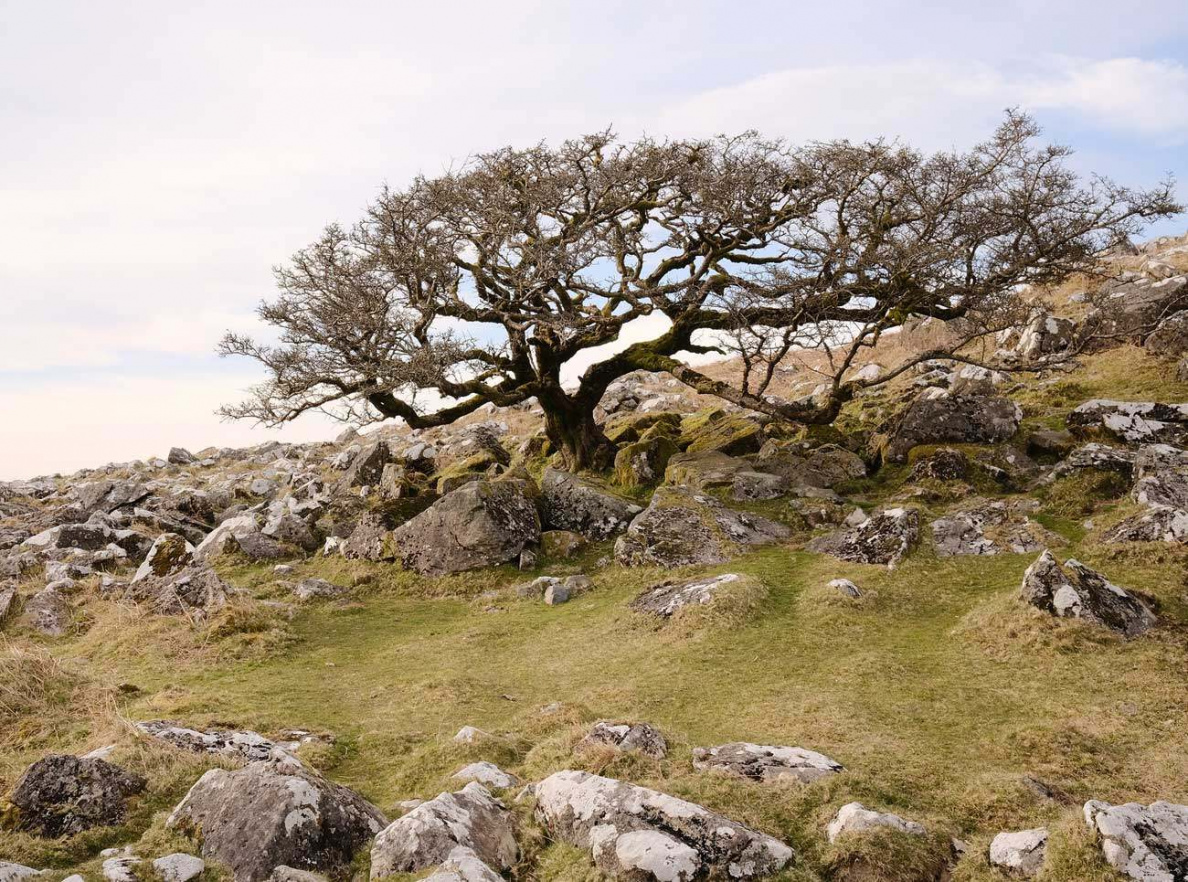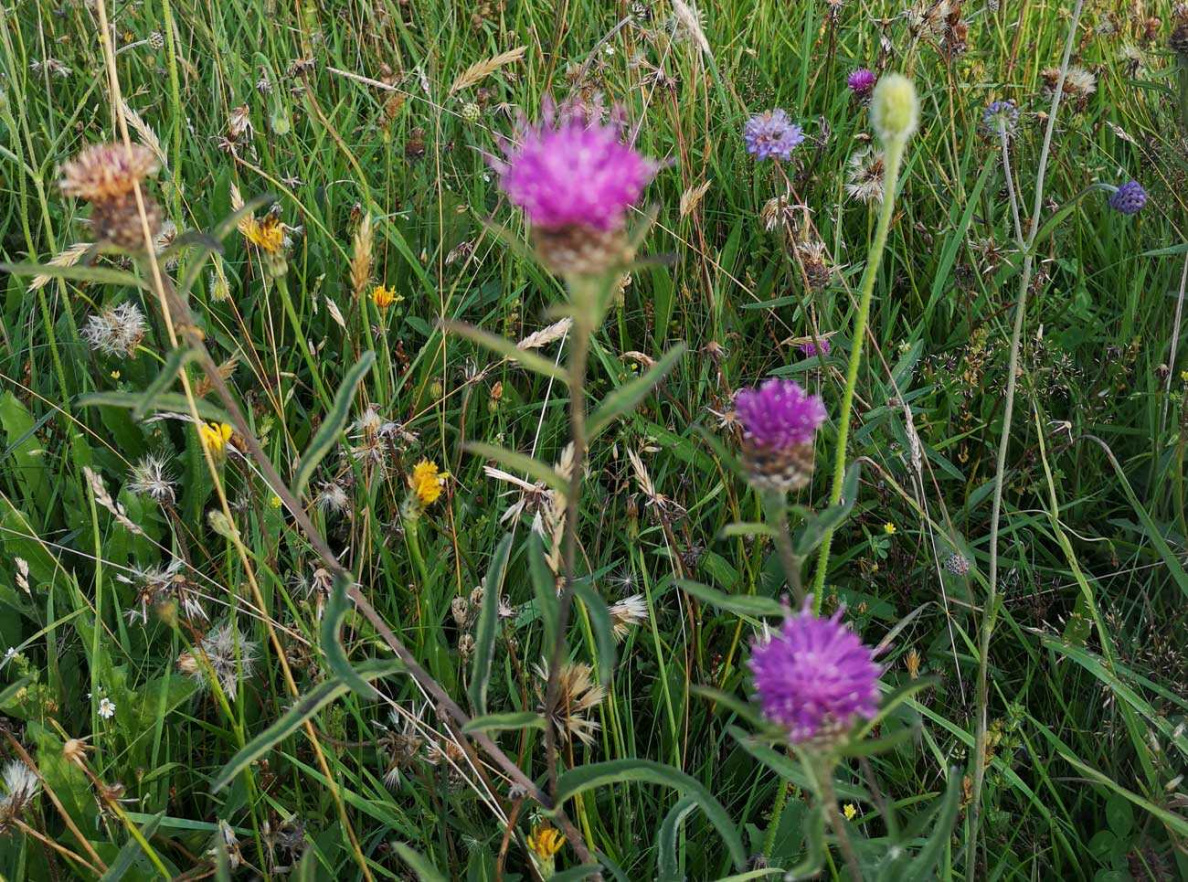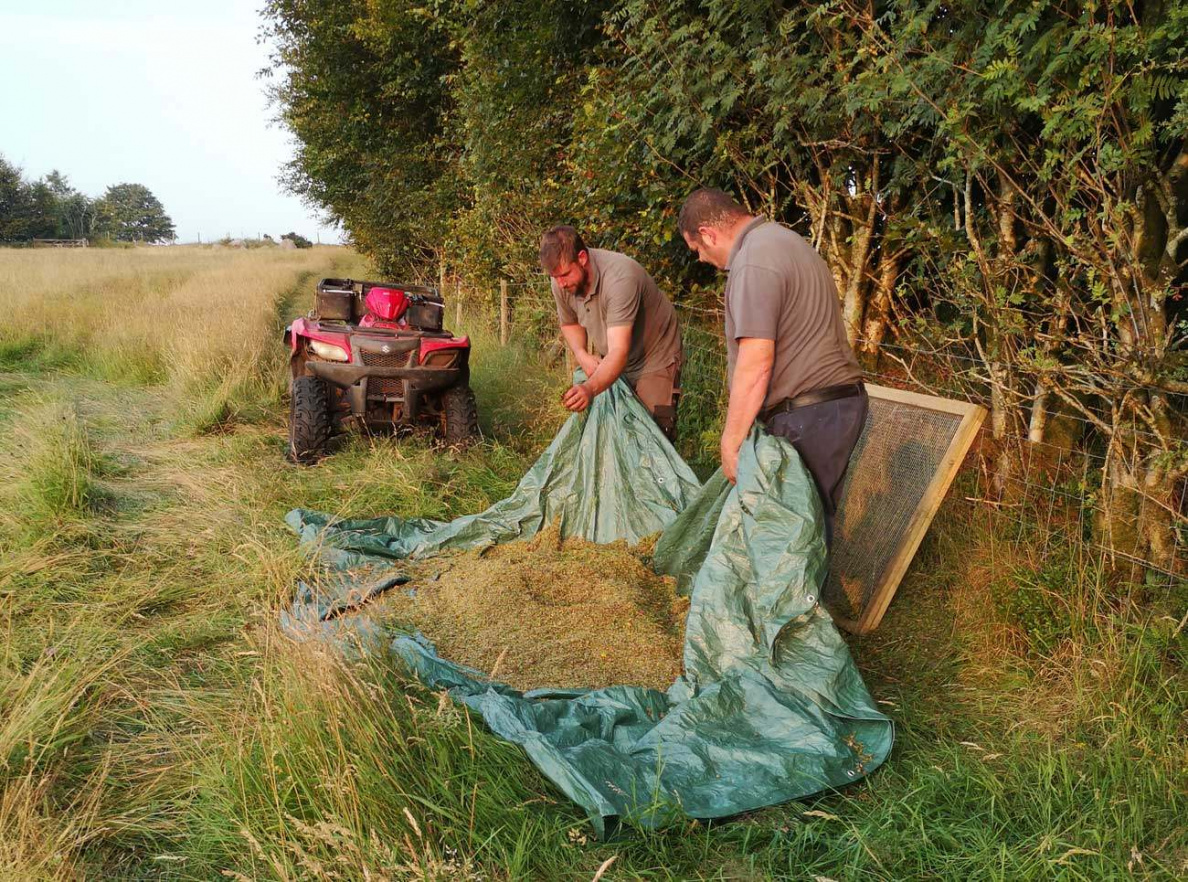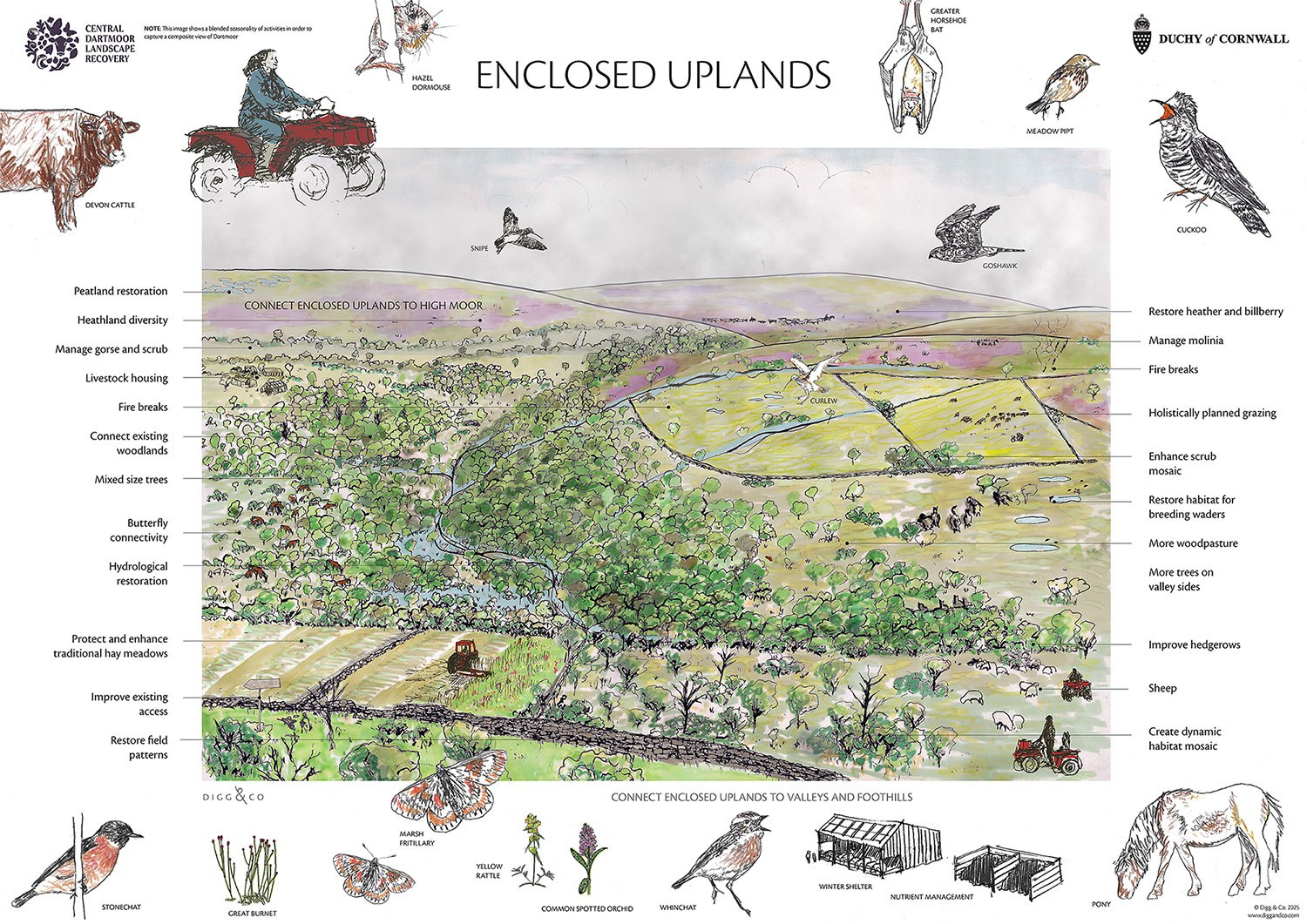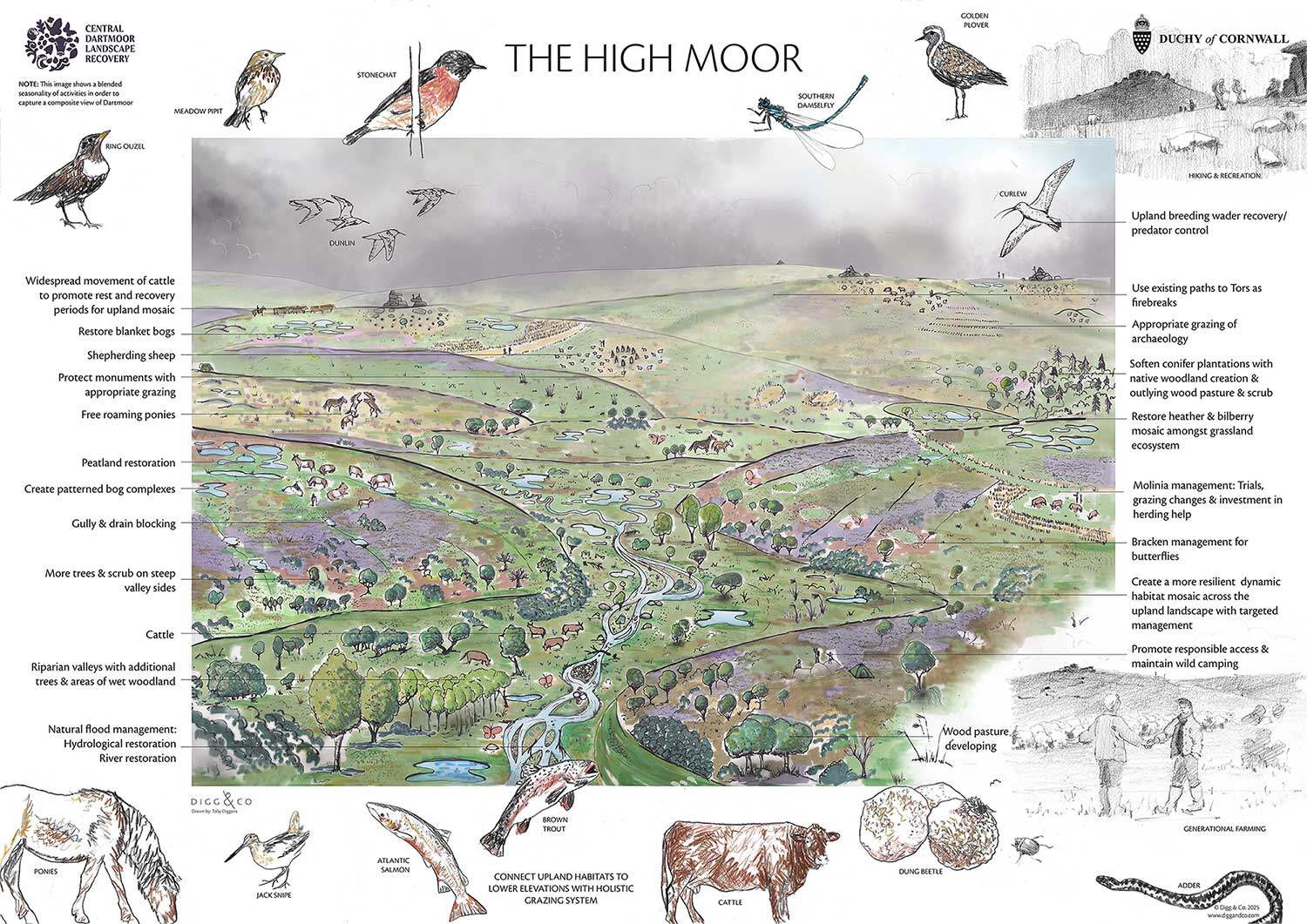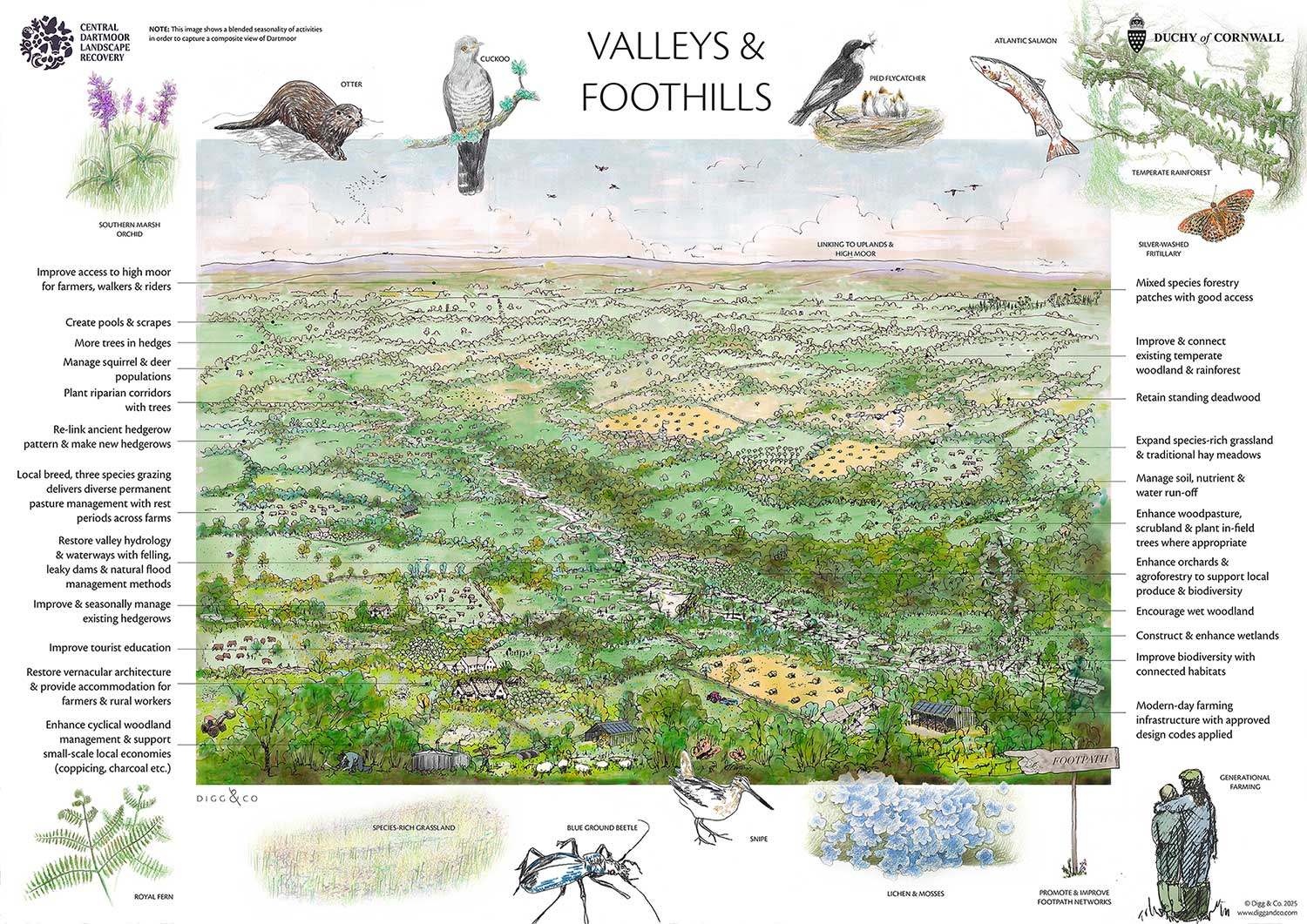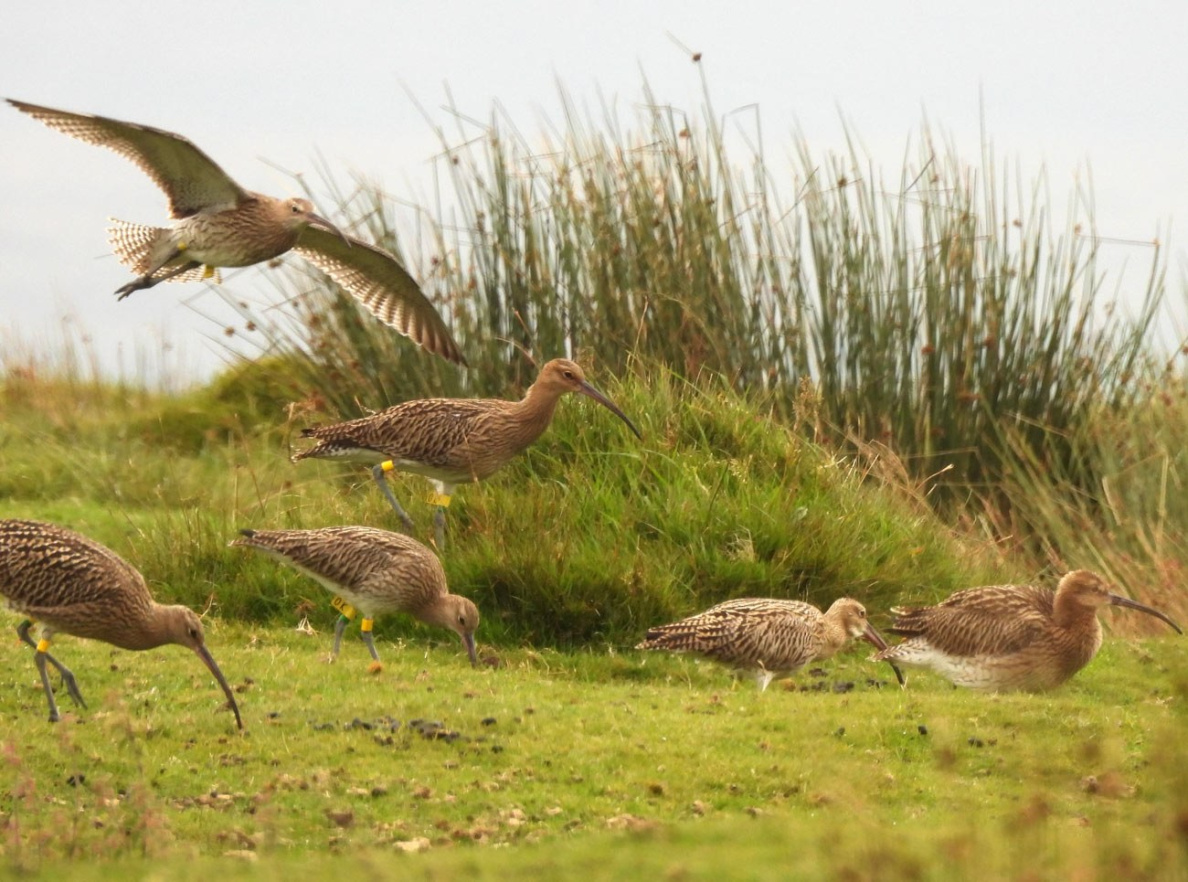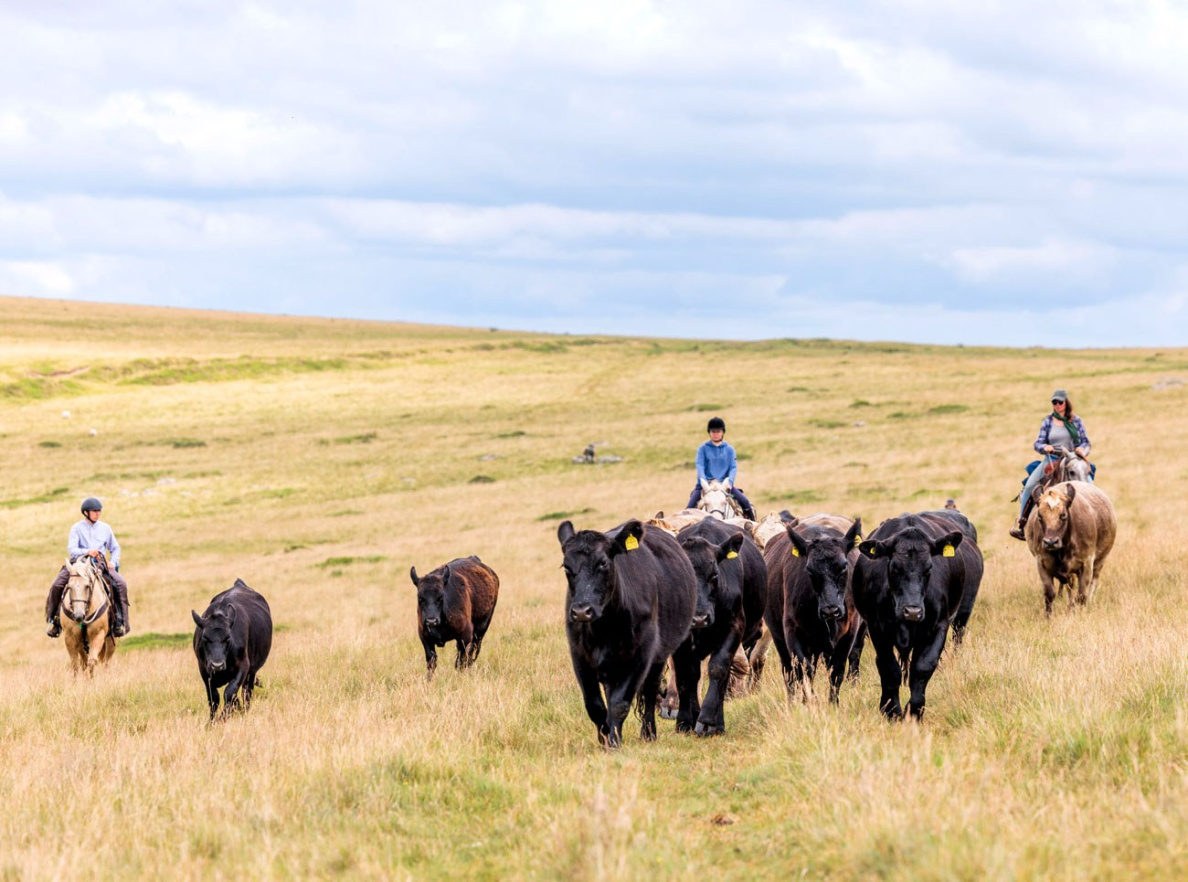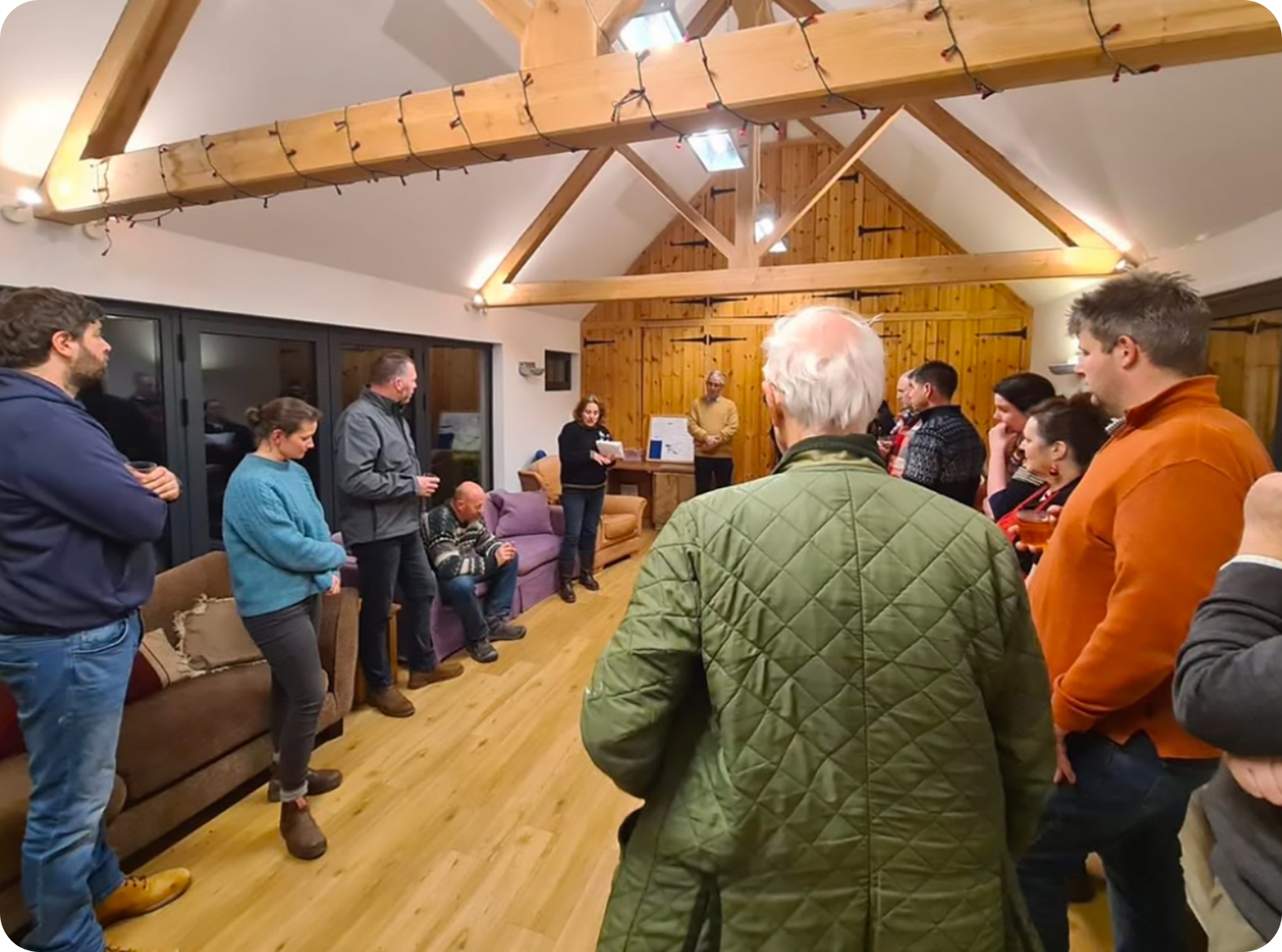Central Dartmoor Landscape Recovery
Whilst we’ve all been in various agri-environment schemes for decades, there is always more we can do on our farms. With input from various experts, we’ve all been developing ideas of where we can create new or enhanced habitats on our land whilst building economic and environmental farm business resilience, alongside producing high quality beef and lamb.
To make these ideas a reality we submitted an ambitious proposal to Defra’s Landscape Recovery Fund and were delighted that our application was approved. In June 2024 we started the formal project development stage.
Our proposed area
By teaming up with the Duchy of Cornwall and a number of other supportive partners we have developed a proposal that covers almost 90 sq miles and around 25% of Dartmoor National Park.
The area includes much of the high moor, and 12,368ha of the Dartmoor Special Area of Conservation, 12,370 ha of SSSI and 202 Scheduled Ancient Monuments covering 612 ha.
This includes around 40 farms, with their intakes / inbye land and seven commons.
We are working closely with the Walkham Valley Landscape Recovery project (led by Dartmoor National Park Authority) and the East Dartmoor Landscape Recovery project (led by the Devon Wildlife Trust), to share knowledge and to maximise the benefits and value for money of our projects.
What is Landscape Recovery?
Landscape Recovery is the name given to the most ambitious part of the Government’s ELMS (Environmental Land Management Schemes). Unlike the other parts of ELMS, that operate with separate agreements and plans for each farm, Landscape Recovery works by bringing together groups of farmers, landowners, land managers to deliver landscape scale enhancement.
We have a 2 year Development Stage (started in June 2024) to agree a shared ambition for the land we want to take forward to the next stage and plan how this can be achieved. If Defra approves these proposals, then the project will receive long-term (20 years) funding to implement – but will also need to secure some private finance.
Our vision
One of the key activities undertaken at the start of the development phase has been a Dartmoor-wide visioning consultation, conducted in partnership with the Duchy of Cornwall. Facilitated by a farmer and a landscape architect, alongside support from Flora and Fauna International, this process has drawn input from a diverse range of stakeholders; ranging from statutory bodies, commoners, ENGOs to farmers. Their insights have helped to shape future management scenarios and develop a shared vision for the land that respects its cultural and ecological importance.
Landscape Recovery projects
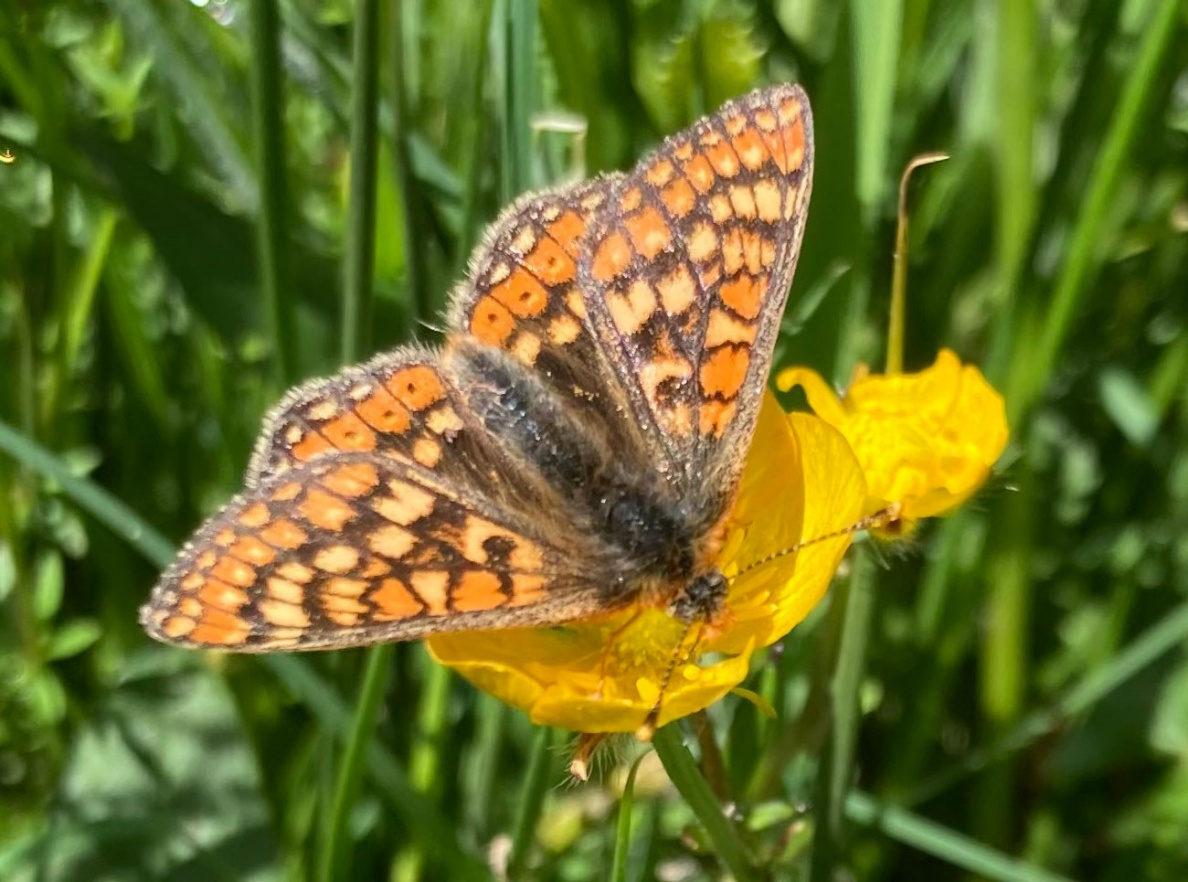
Landscape Recovery projects
Through the development phase we are working up landscape scale projects to connect the farms and commons.
Developed in partnership with the Duchy of Cornwall
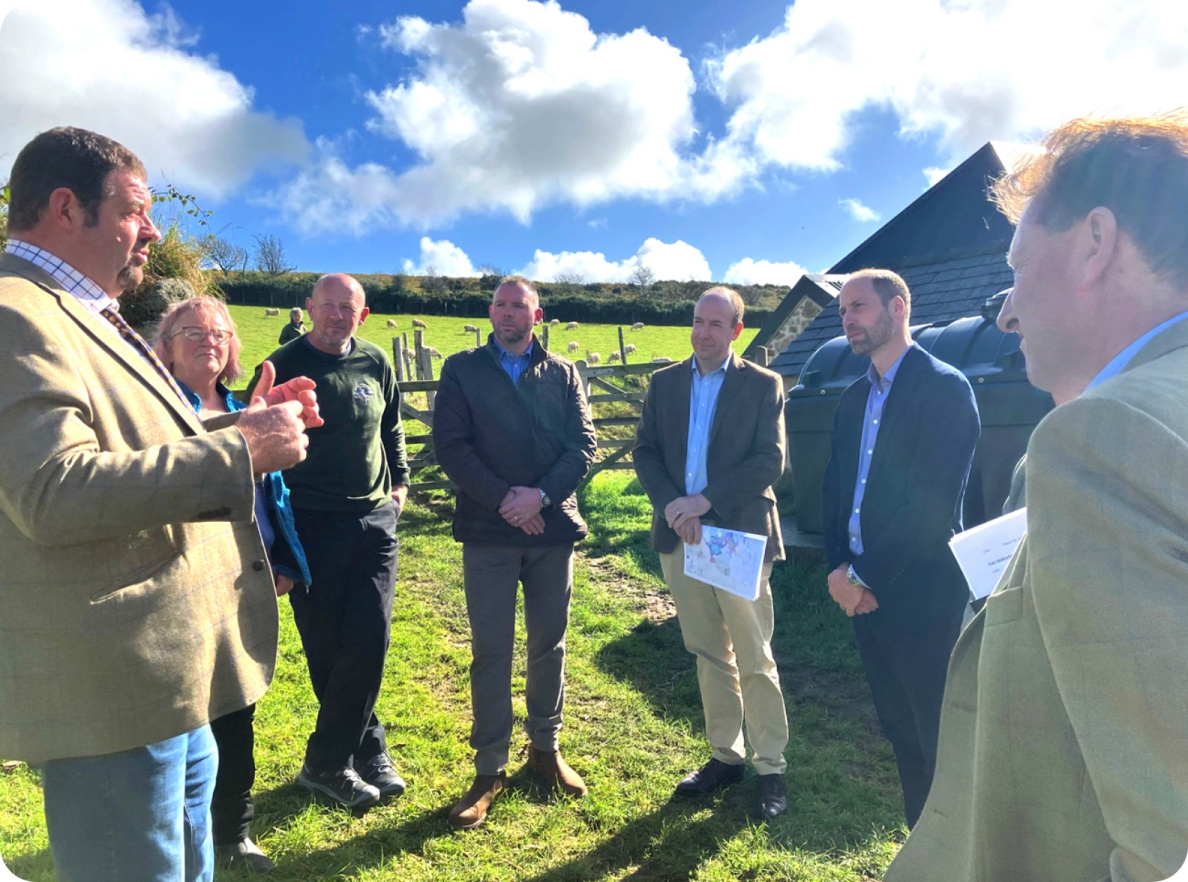
Developed in partnership with the Duchy of Cornwall
We have worked in partnership with the Duchy of Cornwall to develop our Landscape Recovery.

Funded By

With support from
Natural England
Forestry Commission
Environment Agency
Dartmoor National Park Authority / Walkham Valley Landscape Recovery
Devon Wildlife Trust / East Dartmoor Landscape Recovery
Dartmoor Preservation Association
Historic England
Dartmoor Hill Farm Project
MoD
SWW
South West Peatland Partnership
Butterfly Conservation
Moor Meadows
Moor Trees
Westcountry Rivers Trust
RSPB
Dartmoor Pony Heritage Trust
Dartmoor Hill Pony Association
Dartmoor Nature Alliance
Dartmoor Society
Devon & Somerset Fire Service


